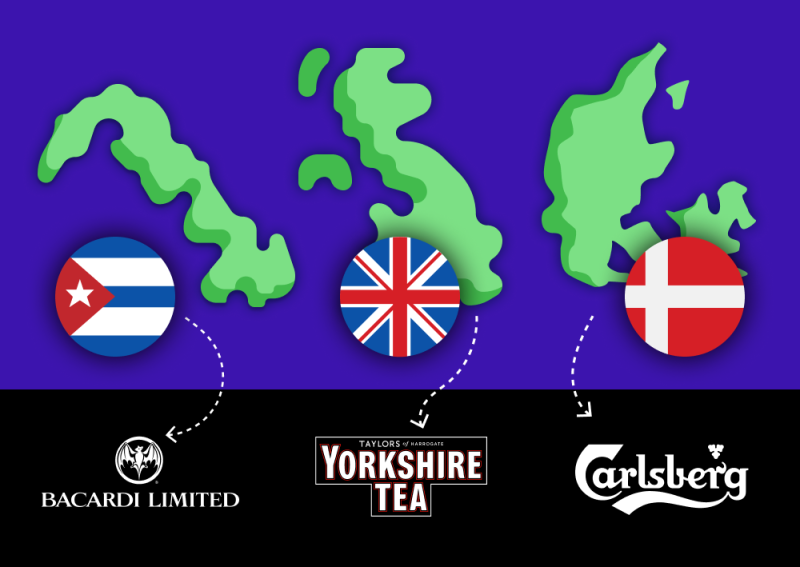“If it’s going to be a world with no time for sentiment, it’s not a world that I want to live in.”
__
We wonder whether Christopher Isherwood would be surprised that his words could be so relatable to the 21st-century marketing world?
You may think that sentiment is best left in romantic novels and movies, but it can actually be a very valuable marketing tool. Sentiment analysis has been used to discover the general feeling around a brand, and then as a diving-off board for building a solid brand. The interest in the area has only grown over the last five years, as seen via Google Trends below.
Still, many brands are not using this marketing tool to grow. Does that include you? If so, dive into this article and see why this is an important metric to build and further your brand.
What Is Sentiment Analysis and Why is It Important?
Sentiment analysis revolves around what consumers think about your brand. It is a means of tapping into their feelings and emotions, most of which will be clearly displayed online.
There are three types of sentiment that you should look into: positive, negative, and neutral. These are all pretty self-explanatory, but here are a few great examples:
Positive sentiment
Negative sentiment
Neutral sentiment
On top of social platforms, you can also find sentiment in online forums, reviews, and or even in local media. The more data you collect, then the better your analysis will be. Knowing what people think of your brand is always good, but carrying out a thorough sentiment analysis can show you a lot more.
Firstly, it’s a great motivator for business decisions. That’s all down to the insight it provides. From blogger outreach programs to customer service, it should give you a clear look into every part of your brand to see what’s working and what’s not.
Keeping an eye on brand sentiment can also help with your PR campaigns. Any PR guru will explain how it’s important to keep an eye on your brand perception and any attention it attracts. One way to stay on top of this is to find out how your audience feels on various topics related to your brand. Tracking brand sentiment is also an important feature for any brand looking to branch out into influencer marketing or maybe change up the influencers they partner with. You can see which influencers and bloggers are already talking about your brand and think highly of it—these are the ones that you need to team up with.
But, most importantly, sentiment analysis can help you build a great brand.
How to Use Sentiment Analysis to Build Your Brand
The most important way to use sentiment analysis to build your brand is by showing that you are engaging with your target audience correctly.
Simon Hall, Brand Strategy and Integrated Services Director at Wyatt International explains the thinking behind this:
“Your brand is built up of the experiences people have when they interact with your product, service, or experience. Whether it’s online or offline, people will be talking about your brand in spaces you may not have control over, and if you’re not listening to what they’re saying, you’re putting your reputation at stake. Sentiment analysis can be a really useful activity as it provides a reality check and makes you really think about your customers. When Jeff Bezos said, “your brand is what other people say about you when you’re not in the room,” he hit the nail on the head.”
Look at the sentiment around your brand and, if it isn’t what you expected or wanted, then you need to make some changes. Fast. Before your brand’s reputation suffers too much damage.
A few tweaks to your marketing strategy can help with that.
Monitor Your Brand
You need to know what potential customers are saying about your brand, plus how your marketing campaigns are affecting their perception of you. A brand monitoring tool can help you do this not just by monitoring the negative/positive associations to your brand, but by providing an overall indication of your brand health.
Focusing solely on sentiment could prove to be too narrow though, so widen your net and monitor as many metrics as possible. As Simon Hall says, measuring sentiment might not be enough to help improve a brand: “While sentiment analysis of a brand is important and should be a respected KPI, it isn’t the be-all and end-all when it comes to measuring brand value. Natural Language Process (NLP) tools and social media listening tools are helpful to see what people are saying, but people will use these platforms to talk about bad experiences rather than good. Alongside this, the data they provide isn’t foolproof, as they fail to take context, sarcasm and cultural differences into consideration.”
Choose Trackable Keywords Carefully
Part of carrying out good sentiment analysis is being able to effectively separate your keywords. Of course, which keywords you target will depend on the kind of sentiment you want to uncover. For analyzing negative sentiment, you might want to go for the likes of “bad”, “worst”, and “hate”. Put these into the analysis tool along with your brand name and see what, if anything, comes up. On the other hand, for tracking positive sentiment, target words like “love”, “like”, and “favorite”.
It’s also useful to think carefully about what your audience might be saying about you. Think about the kinds of things they post and what they usually search for. Would any current trends affect any of this? Once you’ve got a good idea of how your audience interacts online and the kinds of things they want to see, then it’ll help you with targeting a few niche keywords. These will help dig out posts and tweets that generic keywords might not have found.
For instance, did you know that 68% of customers leave a brand because they believe it doesn’t care about them? If you dig deeper into your brand sentiment, you could find some negative tweets or posts that open your eyes. You might think that your customer service is on point, although your customers might actually disagree with you.
If you’re ever stuck trying to think of some keywords, you could use the free tool Answer the Nation.
Keep an Eye on Your Competitors
You can also perform a competitor analysis by completing brand sentiment. On social media, you’ll be able to see so much more than just tweets directed at your brand. You can also do a very quick search to flag up what is being said about your competitors too.
One of the first things that many brands do is to compare positive and negative sentiment. Does it look like consumers are generally more positive or negative to a similar brand to you? If so, why is that?
It’s also worth seeing what’s kind of negative or positive things are being said about competitors. For instance, if your brand focuses on activewear and sportswear with a USP of being waterproof, it could be worth noting how consumers feel about this feature in competitor products. So, when putting your keywords into a sentiment analysis tool, add in the likes of “waterproof” “weather resistant” and relevant phrases, such as “great in the rain”. This will then show sentiment around this particular product feature. Let’s hope that you come out more positively!
Adapt Your Message
Sentiment is always in flux. Just because your customers think of your brand quite highly right now is no guarantee that they will in months or years to come. It’s something that you should always track and, whenever necessary, adapt to it accordingly.
If your brand is showing more of a negative sentiment, don’t panic. The half-life of a tweet, especially one that doesn’t contain any photos or videos, is extremely short. There are around 1.2 million terabytes of data on the Internet right now, so there’s a very good chance that any bad tweets will be swamped by a continual supply of new tweets.
If you want to do something proactive against any bad tweets, you can always work to drown out the negativity. Post engaging tweets that followers will want to share and engage with. Handy tip: post a photo or video, as they are more likely to be retweeted and have a better half-life than tweets without.
An example of this could be the incident with Chick-Fill-A. Back in 2018, it came to light that the brand had been funding political advocacy groups that publicly oppose gay marriage. Social media was not happy, and the brand’s sentiment plummeted. Chick-Fill-A knew that they had to act, and were able to start pushing out a different message. They stopped their funding and turned this into charitable donations to some much less controversial charities and organizations. Sentiment around the brand flipped and became a lot more positive—this was a big help to the business as its revenues have been in steady growth ever since the incident.
Ask for Customer Feedback
Don’t shy away from asking your customers for their feedback. This is useful data that can be added to your sentiment analysis. It can be fairly easy to get positive feedback, but as only 1 in 26 customers is likely to bring up any form of complaint, you might need to fish around to find any negative sentiment this way. Many brands find success when using customer surveys, as people are more likely to say anything negative when able to do so anonymously. All of this feedback that people aren’t willing to share in person or on a public platform provides you with even more data to be analyzed. You’ll be going a lot deeper than simply doing sentiment analysis based on what’s being said on the socials.
Simon Hall explains how asking for feedback when running a sentiment analysis can also give you a deeper insight into who makes up your target audience:
“When it comes to starting a new campaign, understanding what your target audience thinks or feels about the brand you’re working with will offer huge insight. This is really helpful when it comes to crafting audience personas, as you can avoid one-sided monologues with your audiences and fully immerse yourself in their world. This process is essential to understanding each person, who they are and what success looks like for them. Businesses often lose themselves in their own targets and objectives, which places the customer on the back-burner.”
You can never have too much feedback from consumers. It’s all useful data that can be added to your sentiment analysis, used when creating audience personas, and fine-tuning your brand’s message.
So, ready to get a bit sentimental with your brand?
We don’t mean bringing out old family photos or bringing out roses and chocolates; instead you should be getting closer to the data!
To recap: brand analysis is important for many reasons, but most of all, it helps with putting the building blocks of a solid brand in place. By tracking and monitoring brand sentiment, you can start to build your brand. This is useful for startups and international corporations, as continual brand building will lead to healthy growth and revenues. When tracking sentiment, you’ll inadvertently be comparing the competition, reaching out to customers for feedback, adapting your message, and tracking keywords. These can push you and your team forward while also bringing benefits to other brand assets, including SEO and PR.
The first steps in nailing brand sentiment analysis are choosing the best keywords. Once you start seeing the data, it’s time to assess your next steps: keep doing what you’re doing or try to change the public’s opinion of you? Only your brand sentiment can tell!






